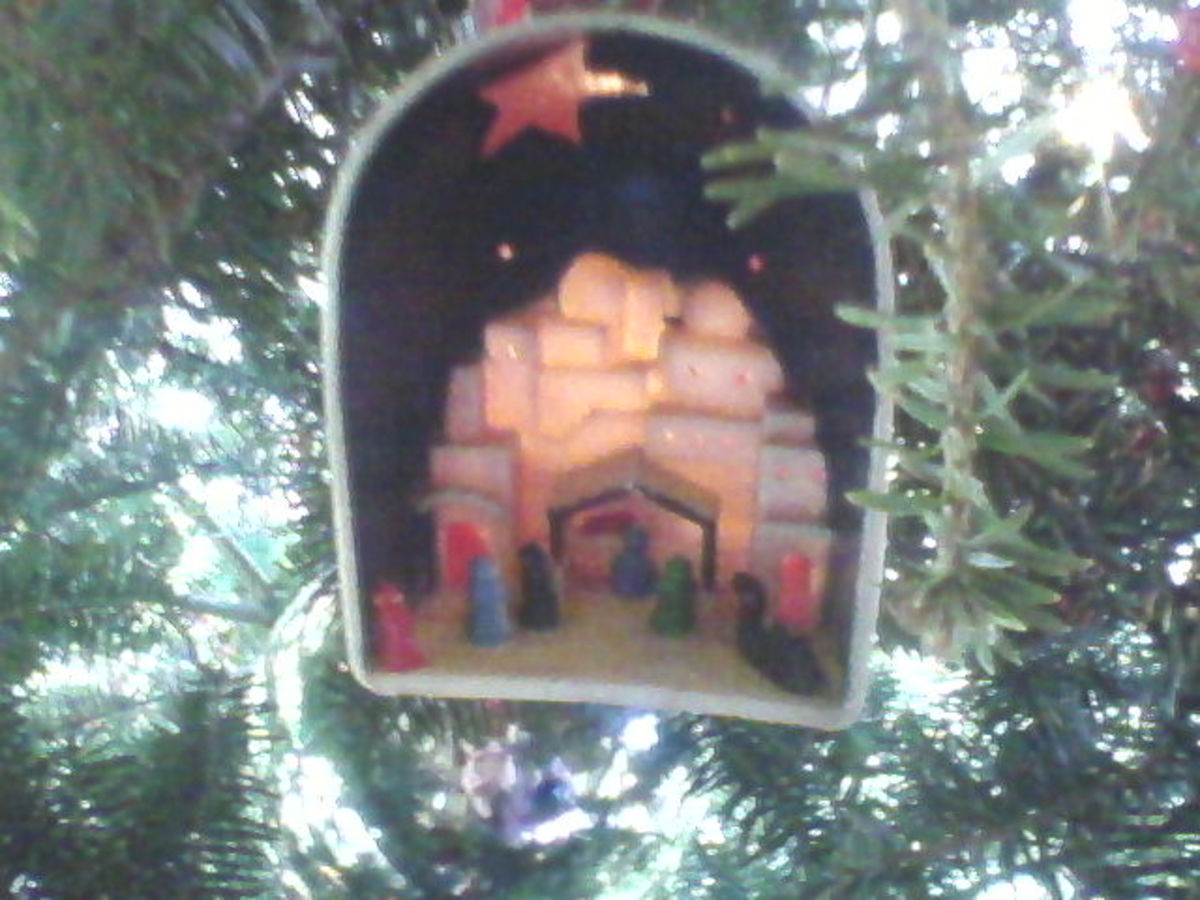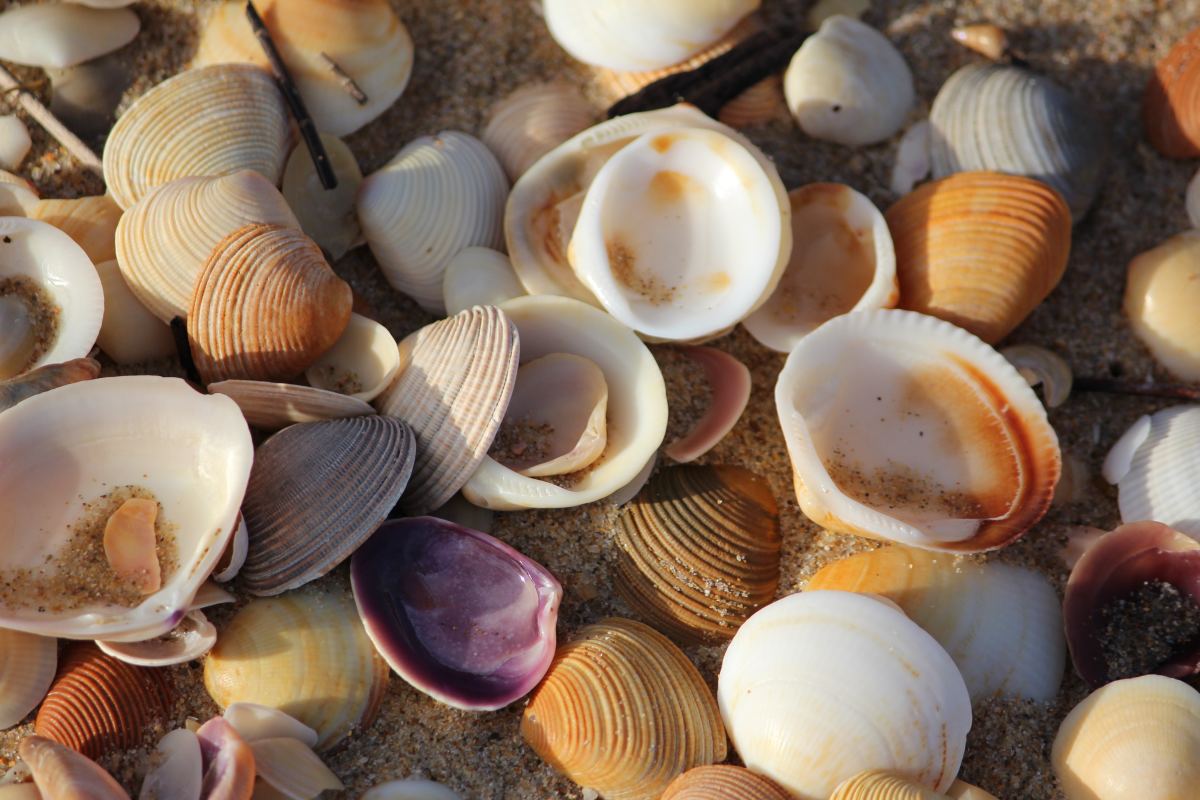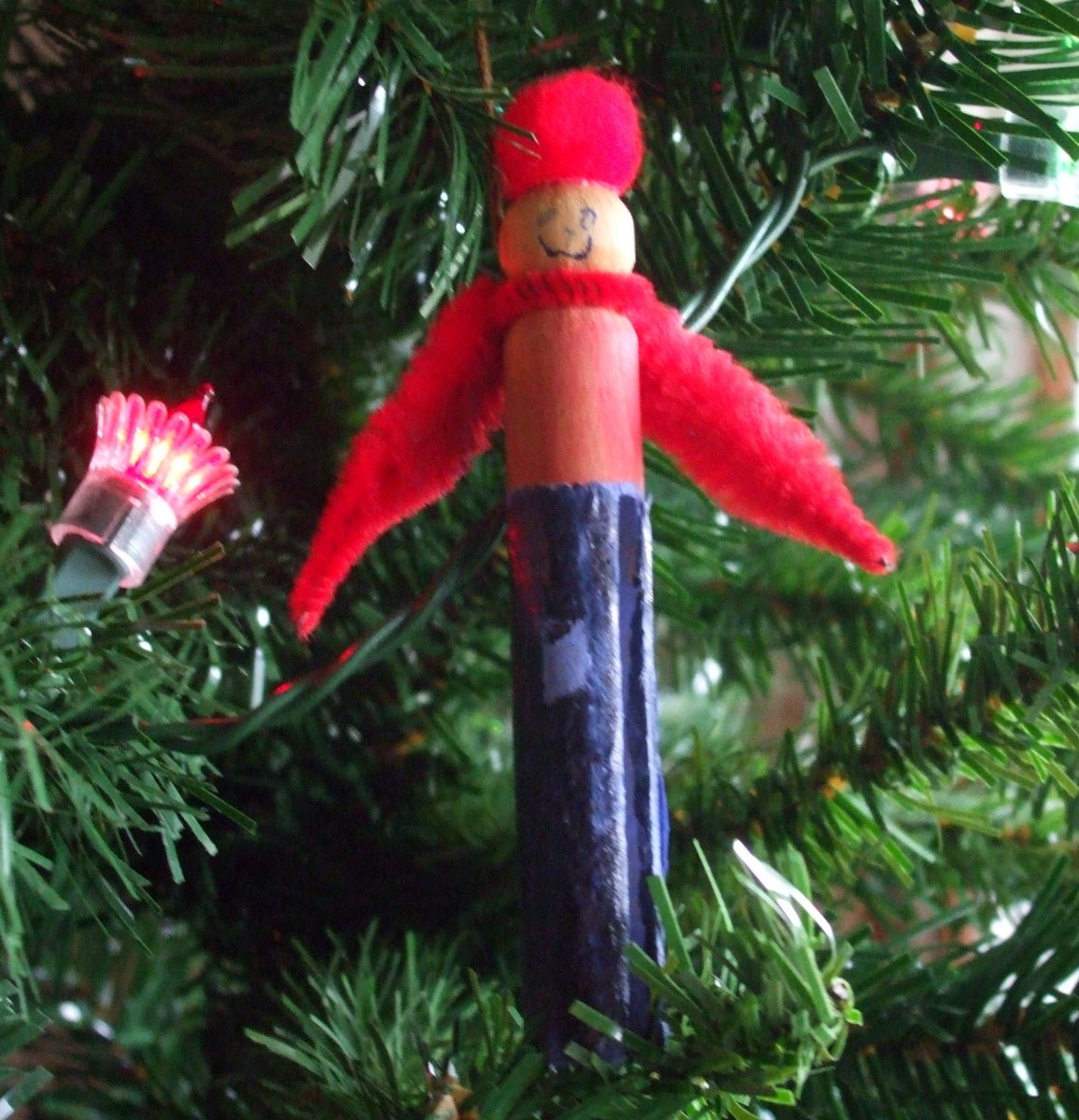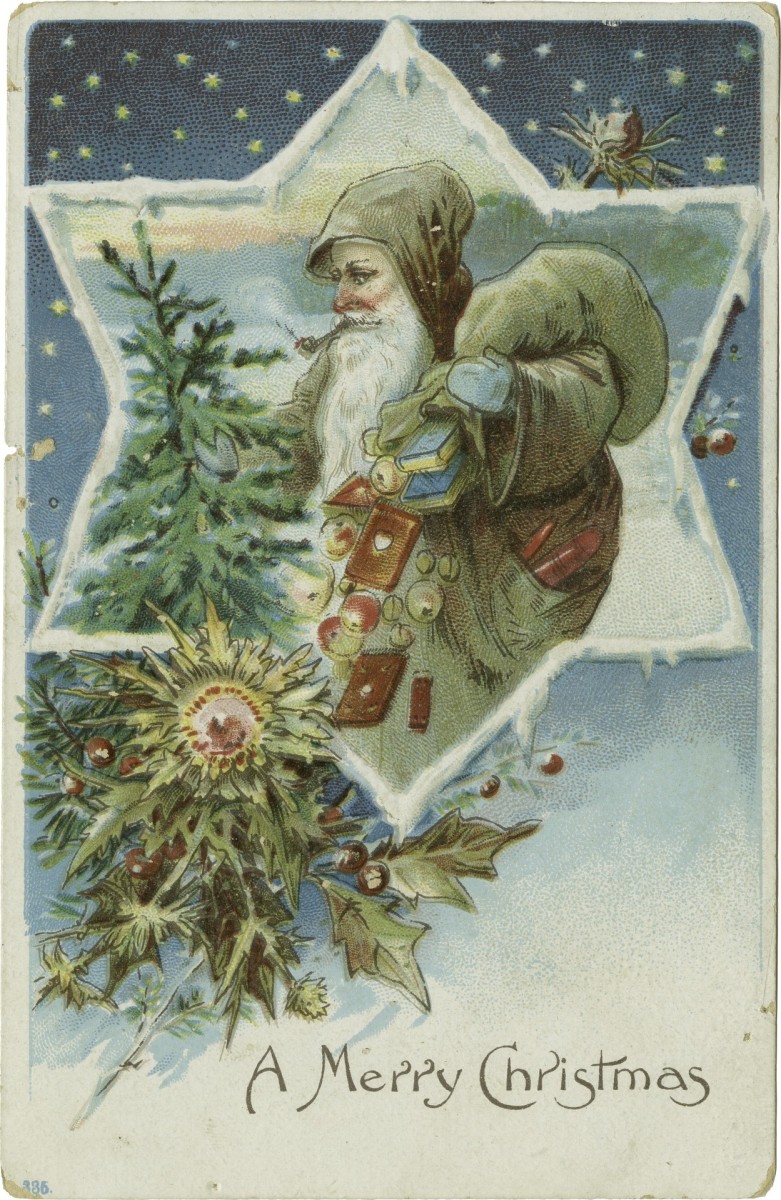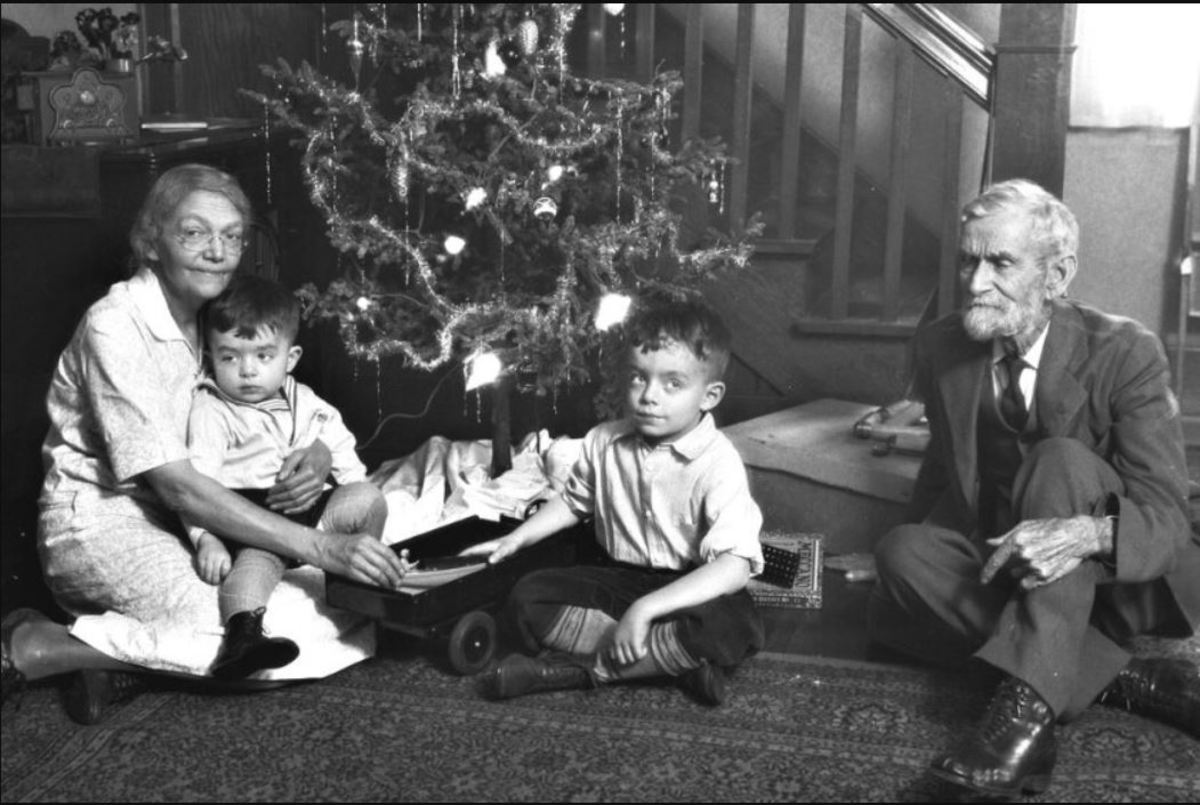History of Glass Christmas Ornaments
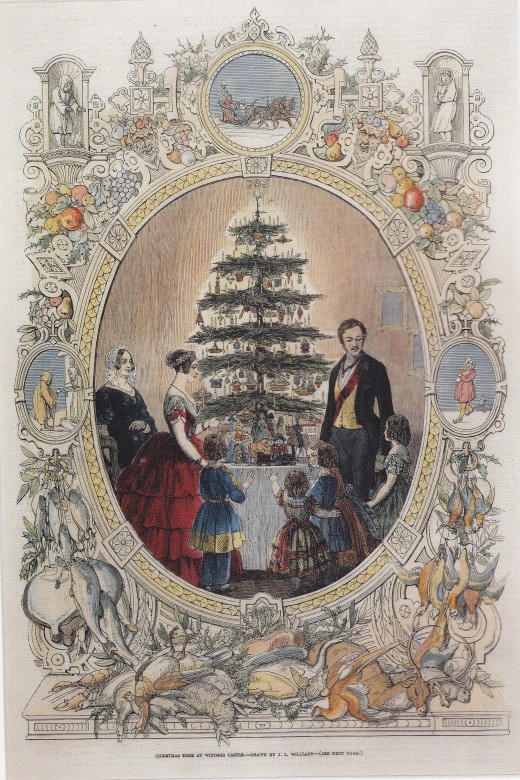
Christmas trees are so common a decoration that we might not realize how new they are. The Christmas tree has actually had a fairly short history. The earliest known tree is from the early 1600's in Germany. It was covered with natural decorations like apples and candies. Germany has the longest tradition of indoor decorated trees.
It wasn't until the 18th century that other countries in Europe started decorating trees like Germany.
In England, Germany-born Prince Albert, husband of Queen Victoria, was not the first person to introduce decorated trees to the celebration, but he did indirectly make them popular. Albert remembered the trees from his childhood and started the tradition for his children.
A popular engraving was made for the Illustrated London News of the royal family standing around a Christmas tree, in 1841. Soon after, Victoria's subjects began to decorate their own trees. This tradition caught on and soon most Christian had a decorated tree for the holiday.
The decorations were still fairly simple; shiny apples, dried flowers, paper cut outs, popcorn string, cookies and candies. Wooden ornaments, plain and painted, were made by some families. Gilded paper ornaments also quickly become popular.
It wasn't until the late 1800's that quality manufactured ornaments became available.
Ornaments on Tree
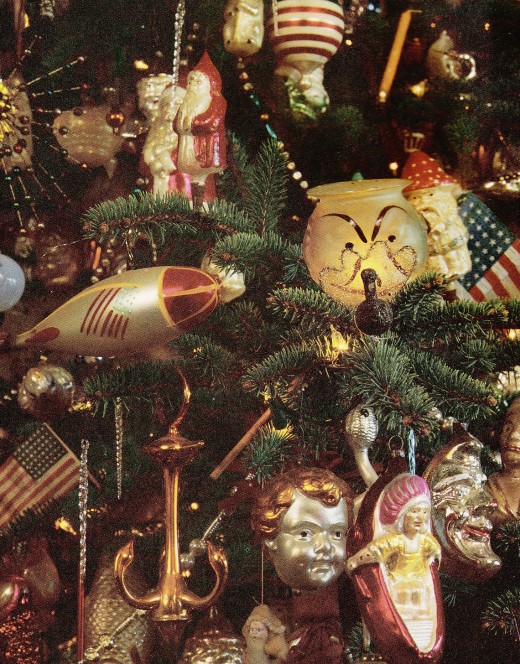
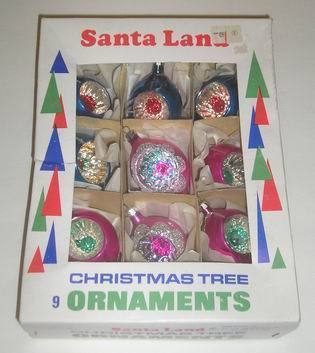
First Glass Ornaments
The first ornaments that showed up in stores were lead stamped into festive shapes and painted. Wooden ornaments also became available, but none of these ornaments were shiny or reflected the light of the candles on the tree.
The first glass ornaments were very heavy, the glass was quite thick. But the invention of the Bunsen burner made it easier to create thinner glass balls.But the glass ornaments still needed to be made one by one. Molds were used to make glass ornaments in different shapes, but it was still a labor intensive process.

Us Enters Market
Families were able to get glass ornaments in a wide variety of shapes such as fruit, cartoon characters, and various fanciful shapes. However the ornaments were still made in Germany and constructed 1 by 1.
But in 1939, Corning Corporation developed a machine that could mass produce glass Christmas bulbs. They flooded the market and with the war, took over from the German manufacturers. During WWII it was difficult to obtain the silvering for the ornaments so many were made of clear glass that was painted on the outside and some of the metal caps were made of cardboard.
There is now quite a bit of competition in the Christmas decoration market, but Corning still makes millions of bulbs in a wide variety of shapes.
Making Ornaments Video
Glass Christmas Ornaments
Other Glass Ornament Sites
- Shiny Brite Christmas Ornaments
Looking for vintage christmas ornaments to give your Christmas tree a unique look? Vintage Shiny Brite Christmas ornaments are some of my favorite decorations to use. - Unique Christmas Ornaments
Bored with ho hum gold and silver balls? Here are some unique christmas ornaments for your tree that will have even Santa Claus doing a double-take. - Buy Vintage Christmas Ornaments Online
If you are looking for vintage Christmas ornaments online then Ebay is the place to shop. Vintage Christmas ornaments are very hard to find in stores but on Ebay you can find all types. Ebay sellers looks for...


